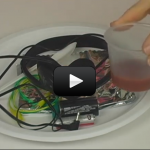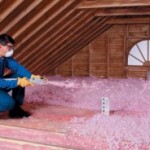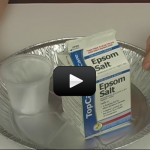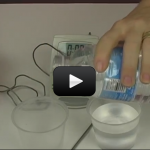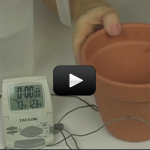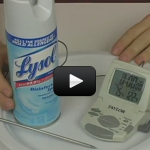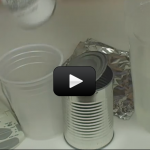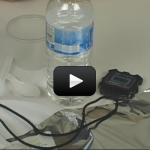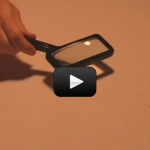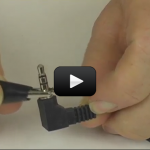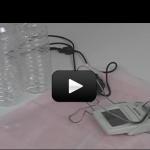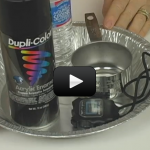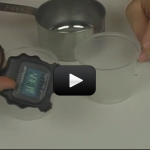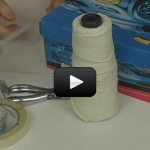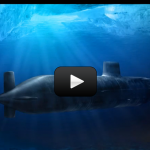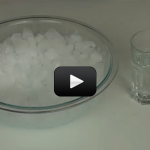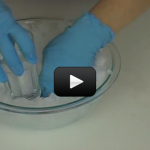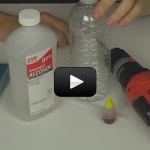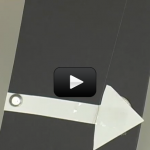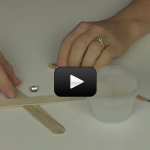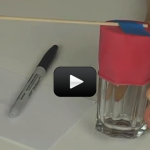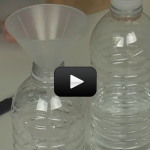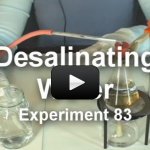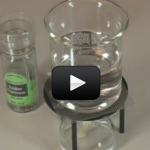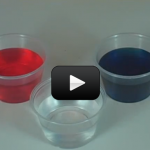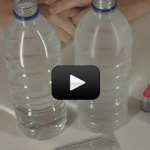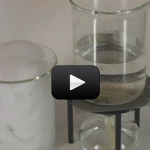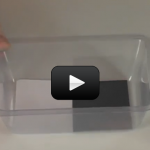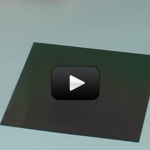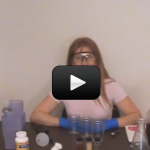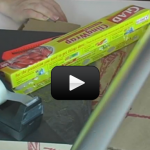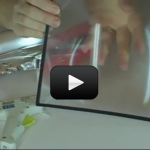Can a Battery Be Used to Store Energy?
A battery is a device that produces electrical energy from a chemical reaction. Another name for a battery is voltaic cell. Voltaic means to make electricity.Most batteries contain two or more different chemical substances. The different chemical substances are usually separated from each other by a barrier. One side of the barrier is the positive … Continue reading "Can a Battery Be Used to Store Energy?" |
Can Insulation Save Energy?
An insulator is a substance that partly blocks or slows the flow of heat through it. Styrofoam is a lightweight plastic used in drinking cups. Styrofoam is a good insulator. A cooler or ice chest that is made of Styrofoam or some other insulator tends to block the flow of heat through it. Heat flows … Continue reading "Can Insulation Save Energy?" |
Can a Salt Be Used for Heating and Cooling?
Cooling and heating are opposite processes. Cooling is the removal of heat energy from an object or space and heating is the addition of heat energy to an object or space. We use these opposite processes a great deal in our daily lives. For example, in the kitchen we use the cooling provided by a … Continue reading "Can a Salt Be Used for Heating and Cooling?" |
How Can Shade Trees Keep Things Cool?
Having shade trees around a house can decrease the cost of cooling the house with air conditioning. A house not shaded from the sun absorbs some of the light from the sun and heats up the outside surface of the house. If the house is poorly insulated, some of this heat will penetrate into the … Continue reading "How Can Shade Trees Keep Things Cool?" |
Can the Evaporation of Water Be Used for Cooling?
The evaporation of water for cooling purposes is called evaporative cooling. An important example of this type of cooling is the removal of body heat by humans through sweating. When your body needs to cool, perspiration is released to the surface of your skin where it evaporates. The evaporation of the water in the perspiration … Continue reading "Can the Evaporation of Water Be Used for Cooling?" |
Can Expanding Gases Be Used for Cooling?
In a typical air conditioning or refrigeration system, a liquid at high pressure is allowed to pass through a valve from a higher pressure to a lower pressure. As the liquid enters the lower pressure region, it changes from a liquid to a gas. This change causes a cooling effect. The liquid cools as it … Continue reading "Can Expanding Gases Be Used for Cooling?" |
Can the Sun Be Used to Heat Water?
The energy of sunlight powers our biosphere (air, water, land, and life on the earth’s surface). About 50 percent of the solar energy striking the earth is converted to heat that warms our planet and drives the winds. About 30 percent of the solar energy is reflected directly back into space. The water cycle (evaporation … Continue reading "Can the Sun Be Used to Heat Water?" |
How Can the Sun Be Used for Cooking?
Cooking involves heating food to bring about chemical changes. Sometimes foods are heated simply because the food tastes better warm than cold. In making tea, we sometimes heat water to help dissolve tea or help dissolve sugar if the tea is sweetened. Normally the water used to make tea is heated on a range top … Continue reading "How Can the Sun Be Used for Cooking?" |
Can Solar Energy Be Concentrated?
The curved shape of the magnifying lens causes light rays to bend and focus on an image. When we look through the lens, we can use it to make writing or some other object appear larger. However, the magnifying lens can also be used to make something smaller. The light from the bulb is bent … Continue reading "Can Solar Energy Be Concentrated?" |
Can Electricity Be Made From Sunlight?
The solar cell you are using for this experiment is made from the element silicon. Silicon solar cells consist of two thin wafers of treated silicon that are sandwiched together. The treated silicon is made by first melting extremely pure silicon in a special furnace. Tiny amounts of other elements are added which produce either … Continue reading "Can Electricity Be Made From Sunlight?" |
Atmospheres
Scientists do experiments here on Earth to better understand the physics of distant worlds. We’re going to simulate the different atmospheres and take data based on the model we use. Each planet has its own unique atmospheric conditions. Mars and Mercury have very thin atmospheres, while Earth has a decent atmosphere (as least, we like to … Continue reading "Atmospheres" |
How Much Energy Does the Sun Produce?
Without the sun, there would be no life on Earth. The sun warms the earth, generates wind, and carries water into the air to produce rain and snow. The energy of the sun provides sunlight for all the plant life on our planet, and through plants provides energy for all animals. The sun is like … Continue reading "How Much Energy Does the Sun Produce?" |
How Can Water Be Used to Store Heat Energy?
Temperature is a measure of the average hotness of an object. The hotter an object, the higher its temperature. As the temperature is raised, the atoms and molecules in an object move faster. The molecules in hot water move faster than the molecules in cold water. Remember that the heat energy stored in an object … Continue reading "How Can Water Be Used to Store Heat Energy?" |
Can Wind Be Used as a Source of Energy?
The United States has large reserves of coal, natural gas, and crude oil which is used to make gasoline. However, the United States uses the energy of millions of barrels of crude oil every day, and it must import about half its crude oil from other countries. Burning fossil fuels (oil, coal, gasoline, and natural … Continue reading "Can Wind Be Used as a Source of Energy?" |
Cartesian Diver
Rene Descartes (1596-1650) was a French scientist and mathematician who used this same experiment show people about buoyancy. By squeezing the bottle, the test tube (diver) sinks and when released, the test tube surfaces. You can add hooks, rocks, and more to your set up to make this into a buoyancy game! |
Instant Ice
Supercooling a liquid is a really neat way of keeping the liquid a liquid below the freezing temperature. Normally, when you decrease the temperature of water below 32oF, it turns into ice. But if you do it gently and slowly enough, it will stay a liquid, albeit a really cold one! In nature, you’ll find … Continue reading "Instant Ice" |
Hot Ice Sculptures
Did you know that supercooled liquids need to heat up in order to freeze into a solid? It’s totally backwards, I know…but it’s true! Here’s the deal: A supercooled liquid is a liquid that you slowly and carefully bring down the temperature below the normal freezing point and still have it be a liquid. We … Continue reading "Hot Ice Sculptures" |
Cloud Tracker Weather Instrument
One of the most remarkable images of our planet has always been how dynamic the atmosphere is a photo of the Earth taken from space usually shows swirling masses of white wispy clouds, circling and moving constantly. So what are these graceful puffs that can both frustrate astronomers and excite photographers simultaneously? Clouds are frozen … Continue reading "Cloud Tracker Weather Instrument" |
Thermometer
First invented in the 1600s, thermometers measure temperature using a sensor (the bulb tip) and a scale. Temperature is a way of talking about, measuring, and comparing the thermal energy of objects. We use three different kinds of scales to measure temperature. Fahrenheit, Celsius, and Kelvin. (The fourth, Rankine, which is the absolute scale for … Continue reading "Thermometer" |
Hygrometer
Hygrometers measure how much water is in the air, called humidity. If it's raining, it's 100% humidity. Deserts and arid climates have low humidity and dry skin. Humidity is very hard to measure accurately, but scientists have figured out ways to measure how much moisture is absorbed by measuring the change in temperature (as with … Continue reading "Hygrometer" |
Anemometer
Most weather stations have anemometers to measure wind speed or wind pressure. The kind of anemometer we’re going to make is the same one invented back in 1846 that measures wind speed. Most anemometers use three cups, which is not only more accurate but also responds to wind gusts more quickly than a four-cup model. … Continue reading "Anemometer" |
Barometer
A barometer uses either a gas (like air) or a liquid (like water or mercury) to measure pressure of the atmosphere. Scientists use barometers a lot when they predict the weather, because it’s usually a very accurate way to predict quick changes in the weather. Barometers have been around for centuries – the first one … Continue reading "Barometer" |
Rain Gauge
Also known as an udometer or pluviometer or ombrometer, or just plan old ‘rain cup’, this device will let you know how much water came down from the skies. Folks in India used bowls to record rainfall and used to estimate how many crops they would grow and thus how much tax to collect! These … Continue reading "Rain Gauge" |
Desalination
This experiment is for advanced students. Lewis and Clark did this same experiment when they reached the Oregon coast in 1805. Men from the expedition traveled fifteen miles south of the fort they had built at the mouth of the Columbia River to where Seaside, Oregon now thrives. In 1805, however, it was just men … Continue reading "Desalination" |
Convection Currents
Every time I’m served a hot bowl of soup or a cup of coffee with cream I love to sit and watch the convection currents. You may look a little silly staring at your soup but give it a try sometime! Convection is a little more difficult to understand than conduction. Heat is transferred by … Continue reading "Convection Currents" |
Sensing Temperature
Temperature is a way of talking about, measuring, and comparing the thermal energy of objects. |
Food Dye Currents
When something feels hot to you, the molecules in that something are moving very fast. When something feels cool to you, the molecules in that object aren’t moving quite so fast. Believe it or not, your body perceives how fast molecules are moving by how hot or cold something feels. Your body has a variety … Continue reading "Food Dye Currents" |
Making Clouds
Indoor Rain Clouds Making indoor rain clouds demonstrates the idea of temperature, the measure of how hot or cold something is. Here’s how to do it: Take two clear glasses that fit snugly together when stacked. (Cylindrical glasses with straight sides work well.) Fill one glass half-full with ice water and the other half-full with … Continue reading "Making Clouds" |
Soaking Up Rays
Heat is transferred by radiation through electromagnetic waves. Remember, when we talked about waves and energy? Well, heat can be transferred by electromagnetic waves. Energy is vibrating particles that can move by waves over distances right? Well, if those vibrating particles hit something and cause those particles to vibrate (causing them to move faster/increasing their … Continue reading "Soaking Up Rays" |
Liquid Crystals
If you’ve completed the Soaking Up Rays experiment, you might still be a bit baffled as to why there’s a difference between black and white. Here’s a great way to actually “see” radiation by using liquid crystal thermal sheets. You’ll need to find a liquid crystal sheet that has a temperature range near body temperature … Continue reading "Liquid Crystals" |
Water Purification
Ever wonder how the water draining down your sink gets clean again? Think about it: The water you use to clean your dishes is the same water that runs through the toilet. There is only one water pipe to the house, and that source provides water for the dishwasher, tub, sink, washing machine, toilet, fish … Continue reading "Water Purification" |
Solar Cookies
Can you use the power of the sun without using solar cells? You bet! We’re going to focus the incoming light down into a heat-absorbing box that will actually cook your food for you. Remember from Unit 9 how we learned about photons (packets of light)? Sunlight at the Earth’s surface is mostly in the … Continue reading "Solar Cookies" |
Marshmallow Roaster
Do you like marshmallows cooked over a campfire? What if you don’t have a campfire, though? We’ll solve that problem by building our own food roaster – you can roast hot dogs, marshmallows, anything you want. And it’s battery-free, as this device is powered by the sun. NOTE: This roaster is powerful enough to start … Continue reading "Marshmallow Roaster" |

